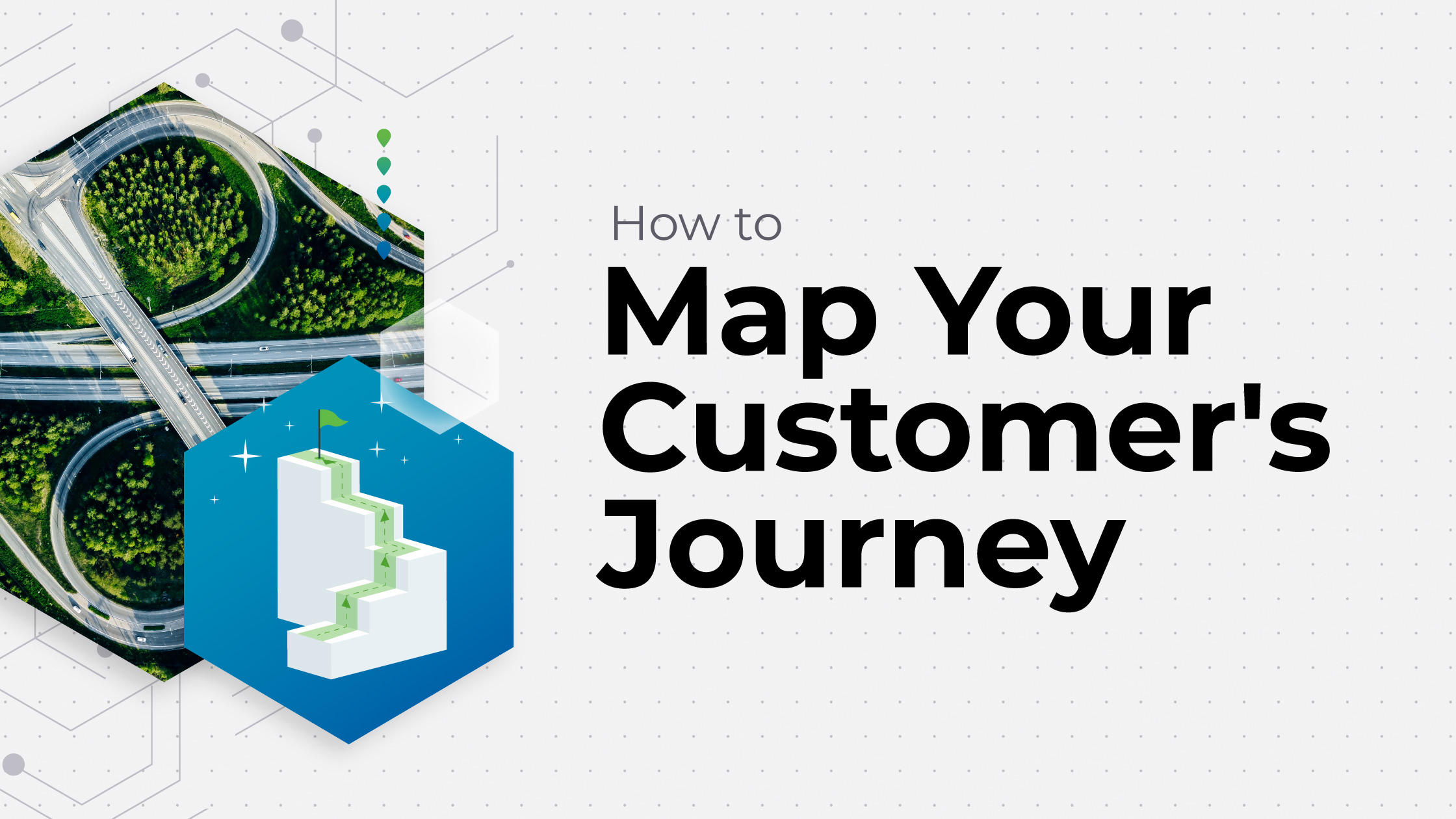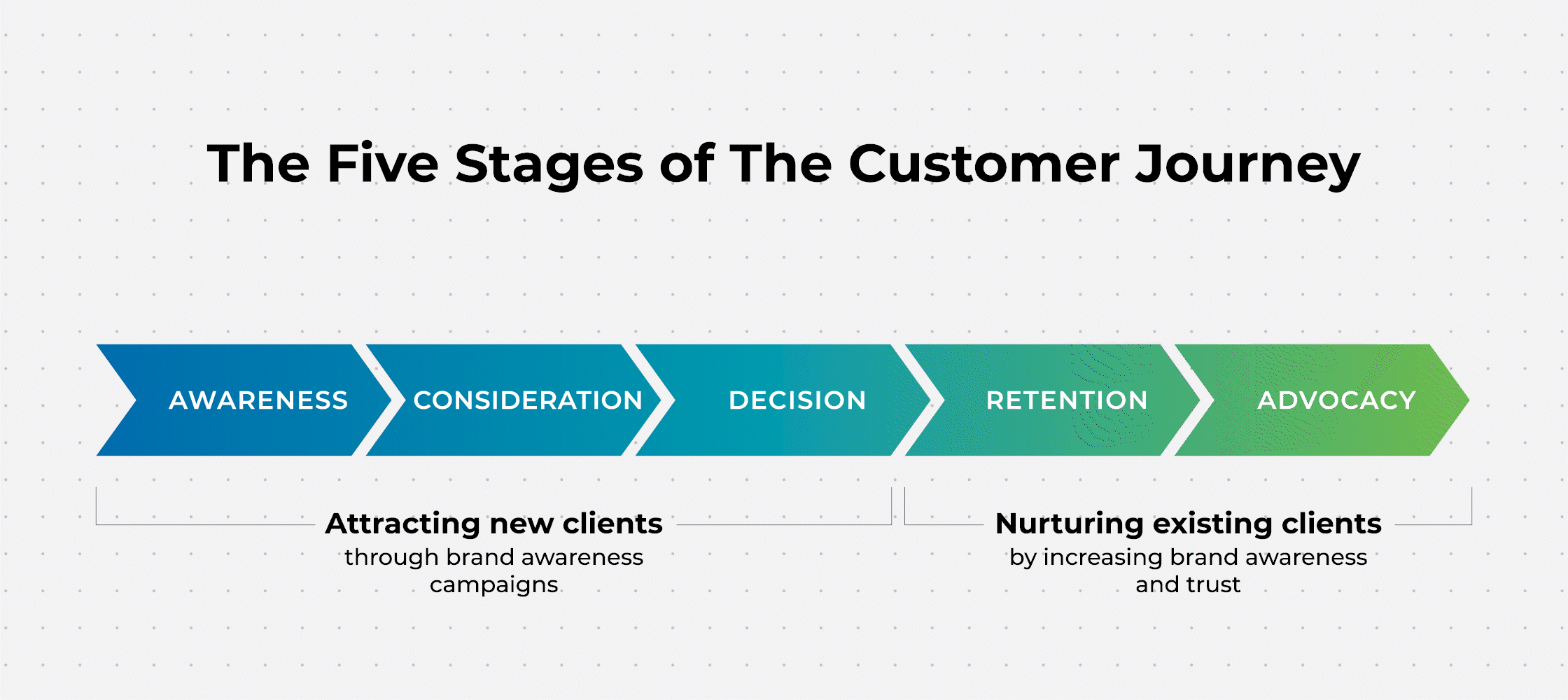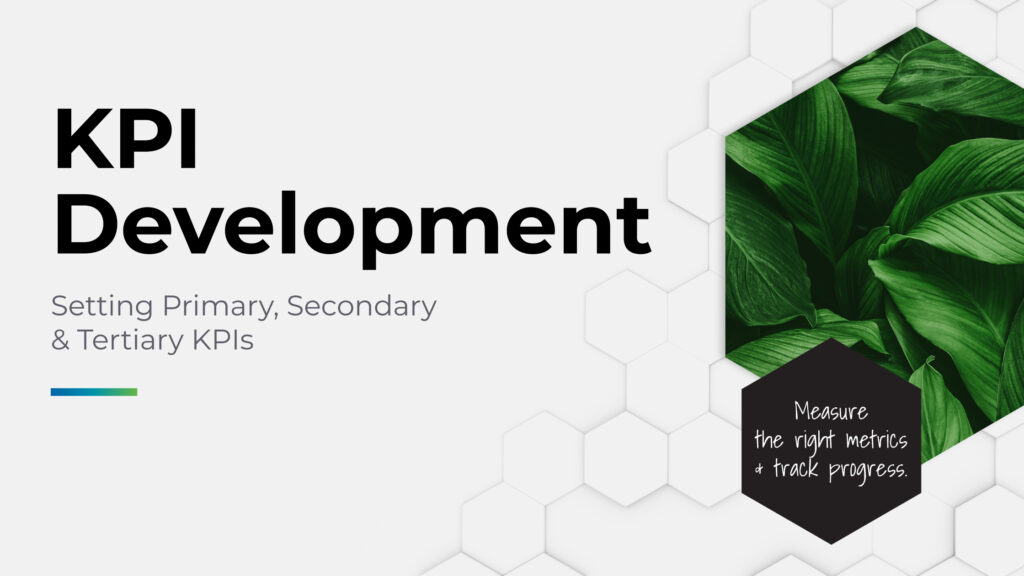
When many brand leaders hear the term ‘user journey’ an eyeroll or two might enter the room.
- “We already know who our customers are and what they want.”
- “Our site is already optimized for acquisition.”
- “Why do marketing people love studying persona engagement this much?!”
The marketing people (at least our particular Hive of marketers) keep bringing this topic up because the vast majority of brands are using user journeys incorrectly.
Most brands focus exclusively on the journey to acquisition and spend far too little time considering WHO is taking the journey. The most substantial performance optimizations are born from obsessing about your brand’s WHO.
You need to know exactly who the end user is and how to reliably predict and interpret their behavior. Without customer journey maps based on robust data, this isn’t happening.
And without a mechanism for collecting and parsing learnings, which then leads to continuous iteration over time as customers evolve, brands run the risk of relying on an outdated go-to-market approach that will underperform.
Indulge us with a beginner’s mind and keep reading to understand why it might benefit you to evolve your opinion and application of the customer journey. We’re covering:
- Understanding customer journey mapping
- Benefits of customer journey mapping
- How to create a customer journey map
- Universal customer journey stages
- 7 steps for a successful customer journey mapping process
- 5 common customer journey mapping mistakes to avoid
What is customer journey mapping?
Customer journey mapping is a visual representation of a customer’s experience with your brand.
This map shows the different customer journey stages a potential buyer goes through when interacting with a company from beginning to end; all the way from discovery to purchase.

Customer journey mapping is the cornerstone of any successful brand or product.
But not all journeys are created equal, even within a single company. There may be different personas you’ll need to take into consideration in order to figure out each one’s path.
- Who are your brand’s stakeholder personas, and what are the similarities/differences between them?
- What is their current journey, and what do they like/dislike about it?
- What are the existing (and ideal) media touchpoints to engage this user?
- What would streamline their path to purchase?
- Do you have different products that would create a different user journey?
There’s a lot of nuance and potential complexity in just those five bullets above, right?
Journey mapping can quickly become a tangled web of confusion, which is why the most efficient approach to these questions begins with clarifying the different stages of the journey.
Universal customer journey stages
Many brands have customer journey stages that are unique to your business. But no matter what you call them, ideally, those stages will fall into the five categories below, which are seen as the industry-wide standard.
1. Awareness
This is when your potential customer/client discovers your business or brand, and becomes aware of what you’re offering.
How they become aware depends on where you are showing up. Knowing your target audience helps you figure out where to engage and how to drive awareness there.
2. Consideration
Your potential customer/client has a pain point (often, more than one) that you should be addressing.
They’re looking around and considering who can help them alleviate that pain. Always assume that prospects are considering alternative solutions.
3. Decision
Once a customer has done their research, discovered your brand, and likely compared you against others, they need to decide which option will best suit their needs. You MUST be an active participant in their decision-making process.
Make sure the prospect has all the information they need to make their decision. Don’t rely on them sleuthing it out – spoonfeed them the details.
4. Retention
The story doesn’t end when a customer selects your product or service. At this point, the goal evolves to keeping them for the long term.
Deliver a first-class customer experience and ensure that you have a mechanism in place to consistently remind customers of the value they’re receiving by partnering with you. An effective retention strategy proactively motivates existing customers/clients to stick around.
5. Advocacy
If your retention efforts are successful, that loyal customer/client will likely advocate on your behalf and send new prospects that you can acquire far more cheaply. Their recommendations and support play a huge role in getting other potential customers to begin their first step into awareness.
PRO TIP: Use the list above to create a customized diagram that visualizes each stage so that all members of your team can reference it quickly and easily.
BIGGEST PRO TIP: Remember that the customer journey is never a linear path.
Go deeper than just listing the customer journey mapping stages
Simply knowing the stages is not enough. Visualizing how the customer lifecycle works is lovely, but how do you map it out and tailor it for your own use?
Every business’s map will be different, but as a general guideline, a map should layer the following across the five stages:
- Customer expectations
- Performance objectives
- Required touchpoints

The customer journey mapping process helps organizations understand the customer’s processes, needs, and perceptions, far more deeply than is possible without it.
This is why your customer journey map is the foundational tool in the creation of a sales and marketing strategy that better meets customers needs, with either a multichannel or omnichannel approach depending on what the product or service is.
However, this all comes with one big caveat that we’re tempted to scream from the rooftops. But we’ll just say it nicely instead. Firmly and nicely.
Customer journey maps must be data-driven.
As much as we respect your many years of business savvy, we’re motivated by math.
Apiary develops customer journey maps for our client-partners by looking closely at a wide variety of relevant data sets, including:
- Customer pain points analysis
- Buyer behavior analysis (time to close, evaluation criteria, etc)
- Competitive analysis
- Pipeline analysis
- Segmentation analysis (AOV, repeat purchase % and frequency, LTV, attrition rates)
- Media usage/habits of the buyer
- Media usage/habits of any other stakeholders with influence over the purchase
- Sales channels preferred by each persona
- Analysis of psychological triggers in messaging and media placements
If you’ve ever done a “mapping” marketing exercise that asked you to describe the customer’s ideal path to acquisition, you unfortunately did not create a customer journey map.
If multiple layers of intersecting data weren’t meticulously analyzed to create your customer journey map, and yet that’s the map that’s guiding all your decisions, that’s a gigantic red flag.
7 steps for building a successful customer journey map
1. Establish clear goals
What do you hope to accomplish? Define your objectives for the customer journey, whether it’s raising awareness or boosting sales. Your goals set the tone for the entire map.
KPI Development: Setting Primary, Secondary, & Tertiary KPIs
Learn how to set effective primary, secondary, and tertiary KPIs with our KPI development guide. Measure the right metrics and track progress.
2. Characterize personas and highlight target customers
However deeply you think you know your audience, go deeper. And also consider that you may have multiple customer personas, and each one needs to be thoroughly defined.
3. Set goals for each stage
In addition to the overarching business goal of this campaign/quarter/year, refer to the five stages to specify a customer goal for each stage. What do you want them to achieve at each stage of the journey?
4. List your touchpoints
Identify all the points where customers interact with your brand. Your website will be crucial here, but it’s typically the second touchpoint after they first hear about you in the awareness phase.
From here, you need to decide how you want your website to contribute to the journey. What are the customer journey touchpoints based on media consumption? Figure out these milestones to create a touchpoint map and implement a structure to ensure each touchpoint is achieving what it’s supposed to.
5. Collect data and recognize customer feedback
Track customer movement through each stage. With detailed knowledge of what the journey looks like, what your customers think of it, and the length of your sales cycle, you can measure success and budget correctly.
Metrics indicate whether impressions are converting into engagement, and ultimately into conversions. Having this information will allow you to further test, refine, and find opportunities for improvement.
6. Determine pain points and areas of friction
What is preventing the customer from taking action? Are they having a poor customer experience anywhere along the way? Identify any obstacles that customers may encounter during their journey.
7. Find optimization opportunities
Look for ways to enhance the customer experience and journey. This is where well-organized data and a robust marketing analytics dashboard will be essential.
This multi-layered map allows you to determine where people will go and how they’ll respond when they get to each touchpoint so you can appropriately nurture them during the entire process.
And maybe most importantly, it needs to be mapped in a way that captures all the important things for YOUR specific customer. Mapping a journey is not the goal – mapping the exact journey your customers/clients want and need is the goal.
Now that you know how to create a customer journey map, we need to talk about the biggest misses we often see…
5 common customer journey mapping mistakes to avoid
Mistake #1: Confusion about the length and journey of the sales cycle.
The eCommerce space tends to have a much shorter sales cycle (anywhere from minutes to 90 days), while the B2B sector is usually on the longer end (anywhere from 14 days to 2 years).
Many brands approach the sales cycle by focusing on what they hope will happen versus what the data shows the customer wants to happen.
Without clarity on the length and nature of your sales cycle, coupled with the number of touchpoints required to advance people through each phase of the funnel, a brand will struggle to define its success or budget parameters.
Mistake #2: Limiting your channels.
Directing all marketing efforts to one or two channels is tempting, but the downside of that singular focus is just too great.
Limiting your channel engagement restricts reach, effectiveness, and often extends the length of the sales cycle. B2B marketers report 24% higher ROI using a multi-channel marketing approach. Moral of this story: Do not put all your marketing eggs in one channel (er, basket).
Mistake #3: AOV and LTV are not clearly defined.
Identifying AOV (average order value) and LTV (lifetime value of the customer) is the only way to be certain whether your marketing and sales teams are directing their efforts and resources toward a high or low-value prospect during a typical sales cycle.
All prospects are not equally valuable. Marketing spend should be directed toward the greatest opportunities first (or only, in some cases).
Mistake #4: Lack of team cohesiveness.
Every member of your team needs a well-rounded understanding of the customer journey. Yes, EVERYONE.
From the strategists to the creative team to the media team to the data analysts, and on and on. Each group should have input in developing the customer journey template, and in forming insights based on customer behavior throughout each stage, which leads us to the last mistake…
Mistake #5: Overlooking easily acquired customer journey data
Not reviewing your customer journey analytics is a massive miss; one that we see almost daily.
If you are putting in all this effort to give your customers the journey you think they should have, but aren’t taking their CX (Customer Experience) into account, or looking closely at your analytics, that’s tantamount to spinning your wheels and wasting your time.
Consider this blog post a friendly nudge to take a long, hard look at your customer journey and how you’ve mapped that. Perhaps it’s time for a little refresh… The only way to create the most high-performing sales and marketing strategy is to get inside the minds of your customer and meet them where they are.
Become fanatical about knowing your customer, and you’ll be fanatical about the results you see.
TL;DR on Customer Journey Mapping
- Most brands either don’t use customer journey maps, or weren’t robust enough in the creation and/or application of the map.
- Customer journey maps should ALWAYS be based on verifiable data; not anecdotal accounts or the sales team’s instincts (no matter how seasoned they are).
- While there are 5 universal stages of the customer journey, each brand should have a highly customized map that’s tailored for each customer segment they’re targeting.





